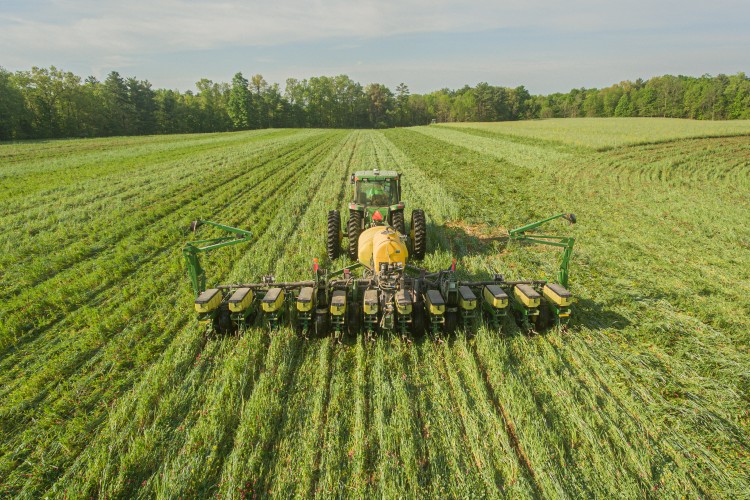How ‘Planting Green’ Helps Farmers Gain Advantage in the Growing Season
 Driving across the agricultural landscape in recent years you may have noticed that there are more fields that look green going into and coming out of the winter. This is due to farmers recognizing that there are multiple economic and environmental benefits provided by integrating cover crops into their farming systems. Cover crops are a crop grown in between cash crops – such as corn, wheat, and soybeans – for the protection and enrichment of the soil.
Driving across the agricultural landscape in recent years you may have noticed that there are more fields that look green going into and coming out of the winter. This is due to farmers recognizing that there are multiple economic and environmental benefits provided by integrating cover crops into their farming systems. Cover crops are a crop grown in between cash crops – such as corn, wheat, and soybeans – for the protection and enrichment of the soil.
Typical cover crop management has a host of benefits. Cover crops can increase soil organic matter, slow erosion, enhance water availability, suppress weeds, help control pests and diseases, and increase soil microbial activity. These benefits can improve improve crop resilience to extreme weather events while minimizing off-farm losses to the environment. In an effort to maximize the potential of cover crop benefits, farmers in western New York have more recently begun the practice of ‘planting green,’ or planting their cash crop into a living, growing cover crop, which is terminated at or just after cash crop planting. The method of planting into living cover allows for drier and more stable soil conditions during planting in a wet spring. Extending the cover crop growing season also produces more biomass, increases soil organic matter, provides an additional source of nitrogen to the cash crop, and adds a thicker layer of mulch to suppress late season weeds. It can also help with nutrient management by allowing farms with manure to spread earlier in the spring.
However, if the cover crop is not terminated in time or is planted too densely, planting green can be detrimental and cause poor crop emergence or poor growth due to competition for light and nutrients, leading to significant cash crop yield losses. Farmers planting green requires knowledge of how different factors interact, including: climate, cover crop and cash crop species, planting rate and timing, and termination timing.
American Farmland Trust is working with farmers in western New York as part of the Genesee River Demonstration Farms Network to highlight the impacts of these practices on real working farms and to share the knowledge gained from the demonstration farms with other farmers and ag service providers in the region, with the aim of improving farm viability and minimizing or reversing environmental impacts.
In August, AFT and partners held a soil health field day to demonstrate cover crops and discuss the results that local farms in the Network had with planting green and other innovative soil health practices. Over 75 farmers attended the event with speakers from USDA Natural Resources Conservation Service, Cornell University, and local agricultural service providers, as well as a panel discussion with demonstration farmers in the Network.
We hope that with farmer-to-farmer knowledge sharing and demonstration farm trials, farmers will gain confidence in trying new practices, and find promising results for the health of their soil and farm viability. Learn more on farming planting green over on our Genesee River Demonstration Farms Network page to learn more and to stay up to date on the latest from the network!

